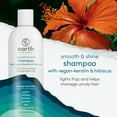Are you truly getting what you pay for when you reach for that "clean beauty" product? The unsettling truth is that the clean beauty industry might be more about clever marketing than genuine safety and efficacy, potentially leading consumers down a path of expensive disillusionment.
The allure of "clean beauty" is undeniable. In a world increasingly conscious of ingredients and their potential impact on our health, the promise of products free from harmful chemicals is powerfully attractive. However, a closer examination reveals a landscape riddled with ambiguity and, some argue, outright deception. The term "clean" lacks a universally agreed-upon definition, leaving companies free to interpret it as they see fit, often resulting in products that may contain synthetic ingredients or simply omit substances that have been unfairly demonized.
The absence of a regulatory framework around the term "clean beauty" allows for a wide range of interpretations. What one brand considers "clean," another might deem inadequate. This lack of standardization creates confusion and makes it difficult for consumers to make informed choices. The result is a marketplace where fear-mongering can thrive, as brands capitalize on consumer anxieties about potentially harmful ingredients.
- Tom Sizemores Kids What To Know About Jagger Jayden Janelle
- Darius Garland Is The Cavs Star Married Find Out Now
Consider the case of Sephora, which recently faced a class-action lawsuit in New York federal court over its "Clean at Sephora" label. The lawsuit alleged that certain products bearing the label contained synthetic or otherwise harmful ingredients, misleading consumers into believing they were purchasing safer alternatives. While Sephora ultimately prevailed in court on March 15, 2024, the case highlights the inherent ambiguity of the term "clean" and the challenges of holding brands accountable for their marketing claims. The court concluded that simply because the retailer's criteria for clean beauty differed from the plaintiffs doesnt make it misleading.
Kara, a TikTok user (@honestlyjustkara), has brought attention to the Function of Beauty lawsuit regarding hair loss claims, further fueling the debate about transparency and accountability in the beauty industry. This underscores the growing trend of consumers using social media platforms to voice their concerns and share information about potentially misleading products or practices.
Native, a company known for its "natural" hair and body wash and deodorant, also found itself embroiled in a lawsuit over allegedly deceptive ingredient claims. The brand's appeal lies in its avoidance of sulfates and parabens, but rumors of "forever chemicals" in its products have cast a shadow over its reputation. This case exemplifies the challenges faced by brands attempting to cater to the demand for natural products while navigating complex and evolving scientific understanding of ingredient safety.
- Michelle Makori News Net Worth Career Secrets Revealed
- Gary Glitters Secret Son The Story Of Yudenia Sosa Martinez
The clean beauty movement traces its roots back to the 1970s makeup trends and the clean eating movement of 1990s California. More recently, the "goopification" of beauty, popularized by celebrities and influencers, has fueled consumer interest in cosmetic products perceived as "natural"that is, produced sustainably and composed of raw, organic ingredients. This trend has created a lucrative market for brands that can successfully tap into consumer desires for healthier and more environmentally friendly beauty options.
But is "clean beauty" truly delivering on its promises? Or is it simply a well-crafted marketing narrative designed to capitalize on consumer anxieties? The answer, it seems, is complex. While some brands are genuinely committed to formulating products with safer and more sustainable ingredients, others appear to be exploiting the ambiguity of the term "clean" for their own financial gain. As one commentator put it, "'clean' is a dubious marketing story (scam) used to dupe consumers into thinking that products labeled 'clean' are safer than products not labeled 'clean.'" The success of clean beauty marketing lies in its ability to tap into deep-seated fears about exposure to harmful chemicals. As the saying goes, "Fear mongering persists because it is effective."
For brands like Beauty by Earth, the focus is on transparency and affordability. Founded in January 2014, the company launched its first product, 100% organic argan oil, on Amazon in April 2014. Despite the challenges of balancing a new business with existing jobs and family responsibilities, the founders believed that Beauty by Earth would be a "game changer." Their mission is to offer clean beauty products that are accessible to a wider audience, proving that effective skincare doesn't have to come at a premium price.
Discovering ingredients like quinoa protein and flaxseed oil, the company is focused on nourishing and promoting a healthy scalp. But the clean ingredients at the heart of the earth products dont tell the full story of their affordable clean beauty. The world may be full of tradeoffs, but thats not how earth clean beauty works.
The story of Amanda Ingram, the wife, mother, former beauty queen, and innovator behind Laila Grace Clean Beauty, is particularly compelling. Ingram's vision for her skincare line arose from her own struggles with hormonal skin issues after the birth of her daughter, Laila Grace. Frustrated by the ineffectiveness of existing "clean" products, she set out to create a line that truly delivered on its promises. Ingram realized all of the ''clean'' products she was using had terrible.
Ultimately, navigating the world of "clean beauty" requires a critical eye and a healthy dose of skepticism. Consumers should be wary of marketing claims that lack scientific backing and should prioritize transparency and ingredient disclosure. By demanding more from brands and holding them accountable for their claims, we can help shape a more honest and trustworthy beauty industry.
Unfortunately, for some, the consequences of trusting these claims can be devastating, as evidenced by the growing number of individuals expressing their frustration online with the hashtag #iwantmyhairback, highlighting potential issues with certain beauty products.
- Jen Carfagno Marriage Net Worth Weather Channel Comeback
- Brenda Holsinger Life Marriage Schwarzkopfs Legacy Revealed


